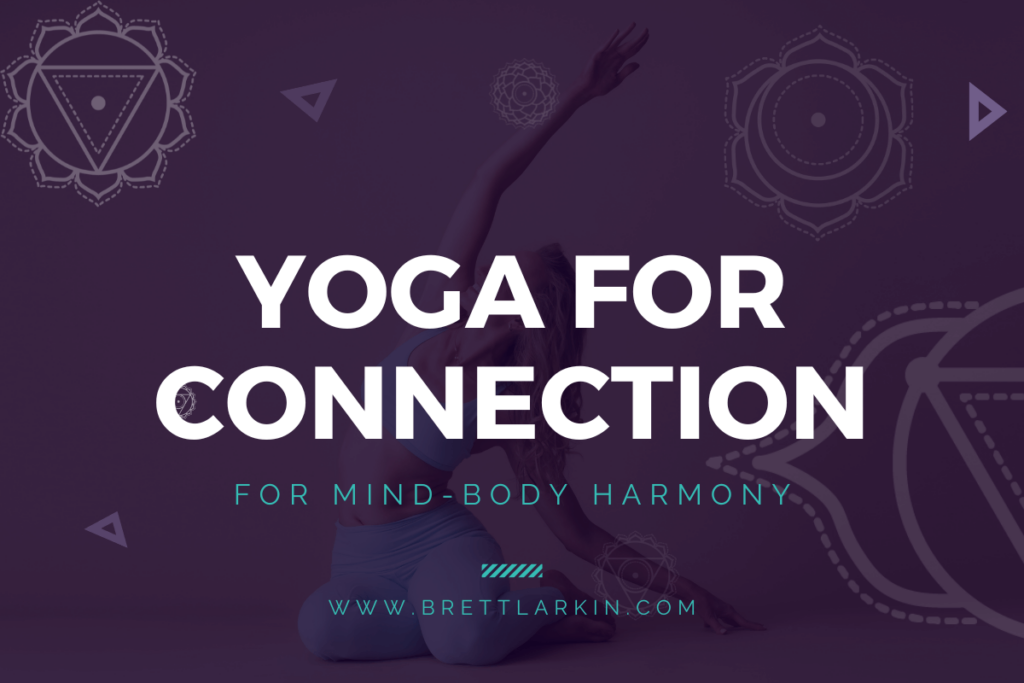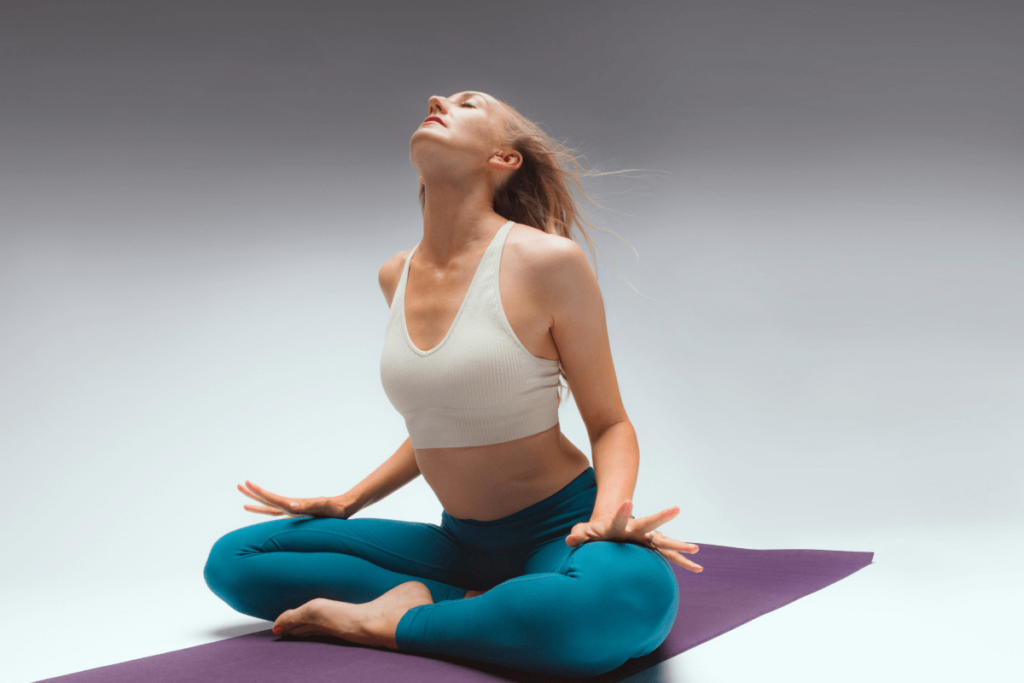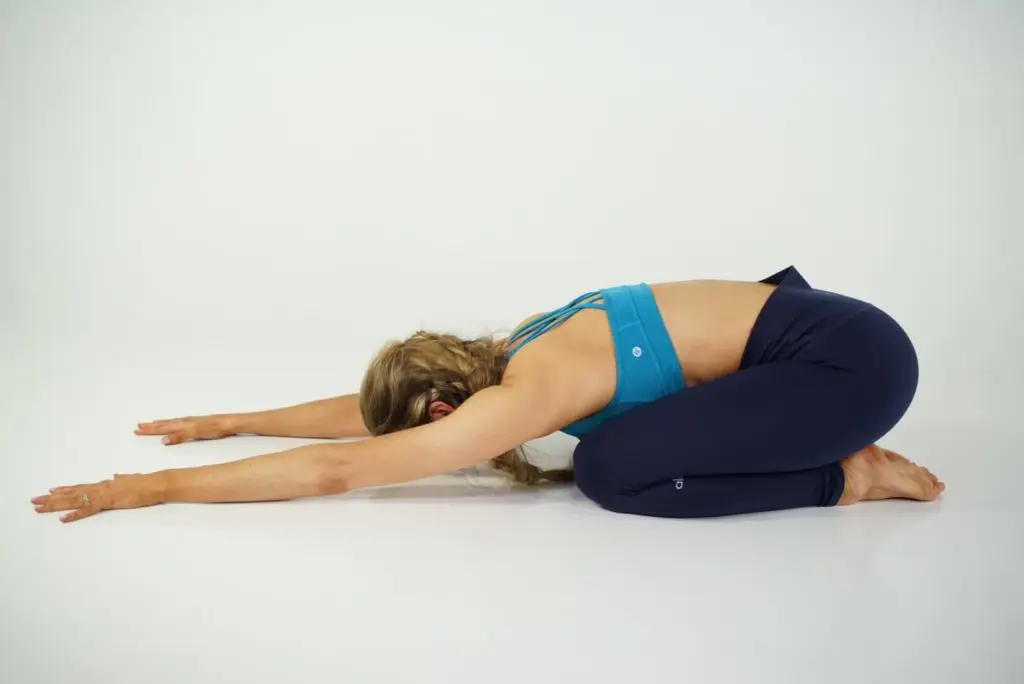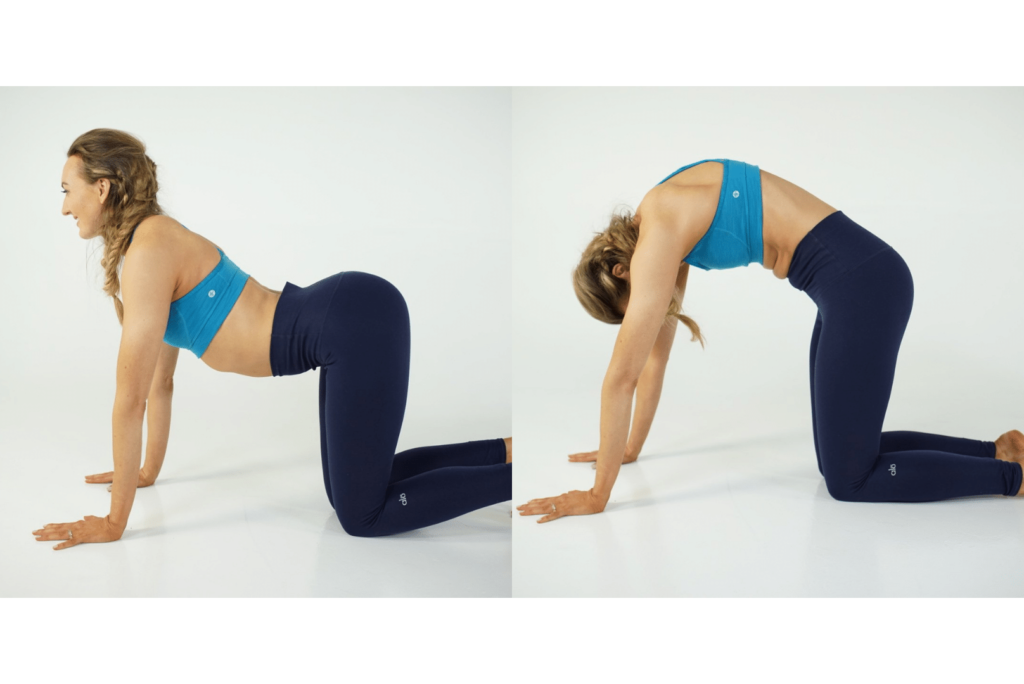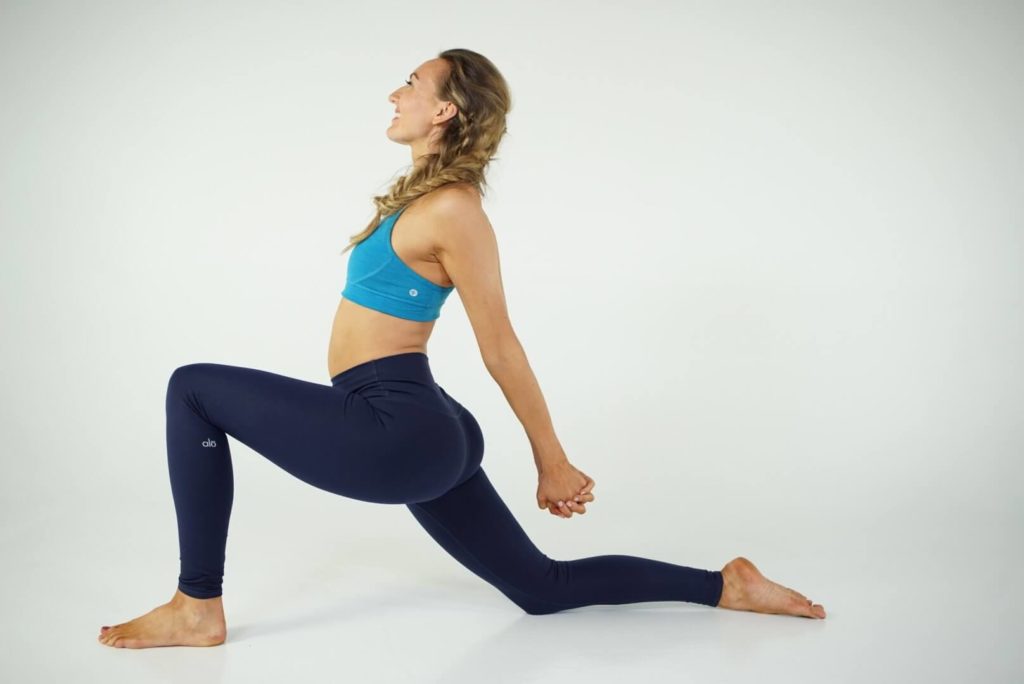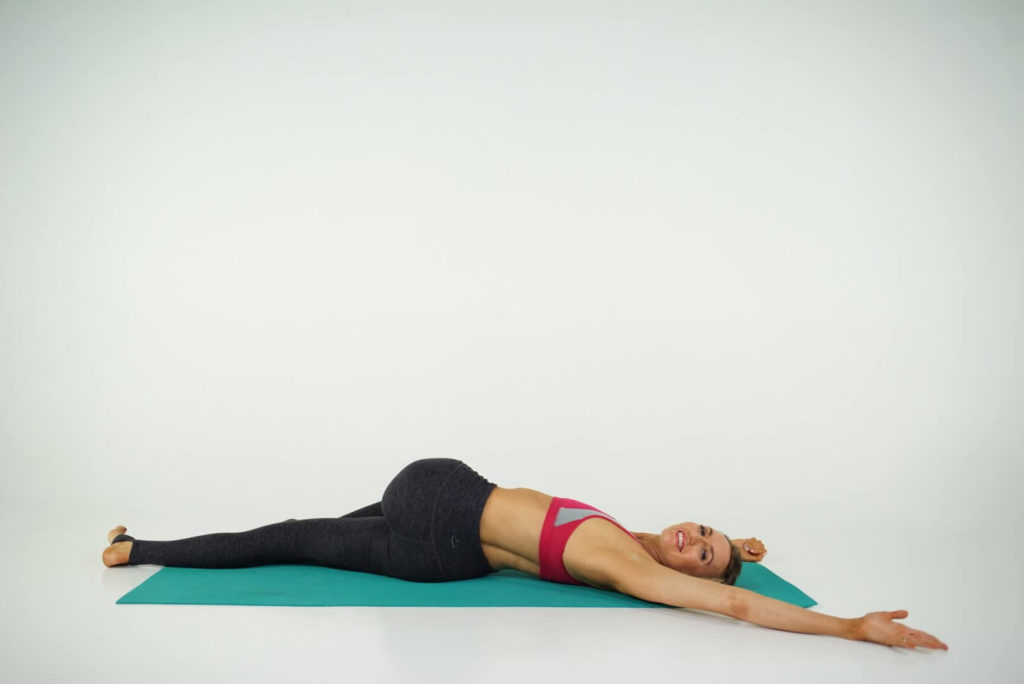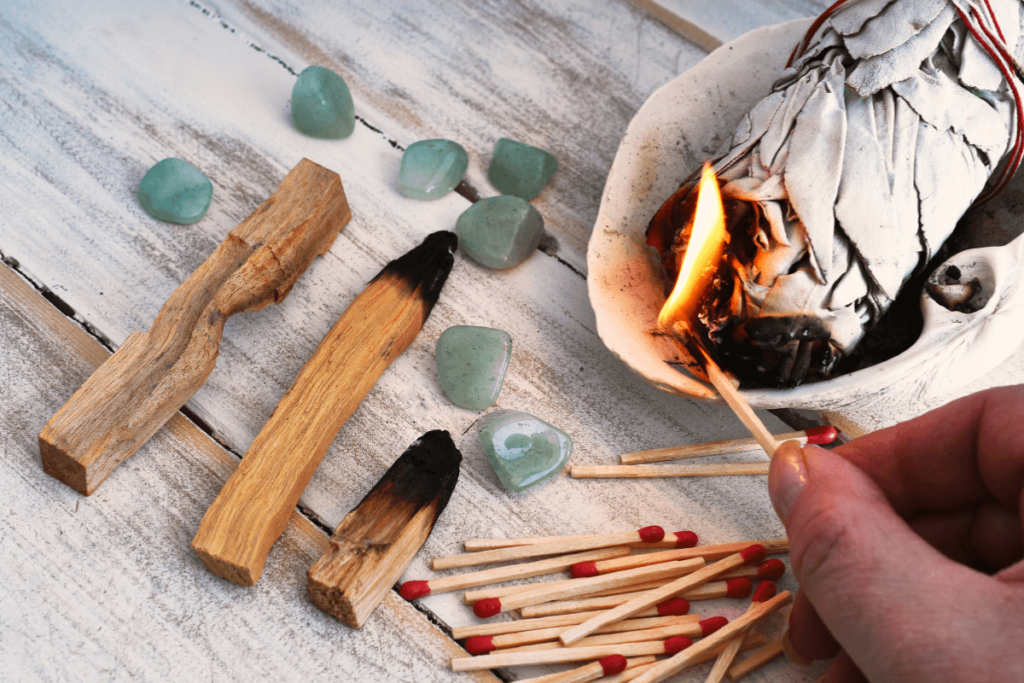In today’s fast-paced world, with endless demands and distractions, it’s easy to feel disconnected from our inner wisdom.
Practicing yoga for connection helps you tune back into your intuition, fostering a sense of balance and clarity amidst the chaos. Even 5 minutes of your day spent in one of your soulmate yoga poses can help you recenter.
If you want to connect with your intuition, but you don’t have a lot of time, you can practice yoga to tune out the outer world and connect with your body and ultimately, your intuition.
How Does Yoga Help Us Feel Connected?
You probably already know the benefits of a yoga practice:
- Reduce stress
- Improve flexibility
- Find emotional balance
- Get better sleep
- Improve your posture
- …and so much more!
What if I told you that yoga helps you improve communication with your intuition? That you’ll feel more embodied and connected with nature, your loved ones, and the community around you?
Because you’re able to slow down, breathe deeply, release tension, and listen to your inner voice.
When you do that, you’re able to show up in your life as your brightest and best self.
Yoga helps you get into a flow state where your mind-body-spirit are in alignment. You become grounded in the present moment. And you don’t have to sign up for a bunch of yoga classes or even become a yoga teacher to access this state. All you need is a few minutes and a space to drop into a pose, whether it’s a seated position, camel pose, or bridge pose.
Awaken Your Feminine Energy with my Somatic Self Healing Masterclass (usually $67) FREE👇
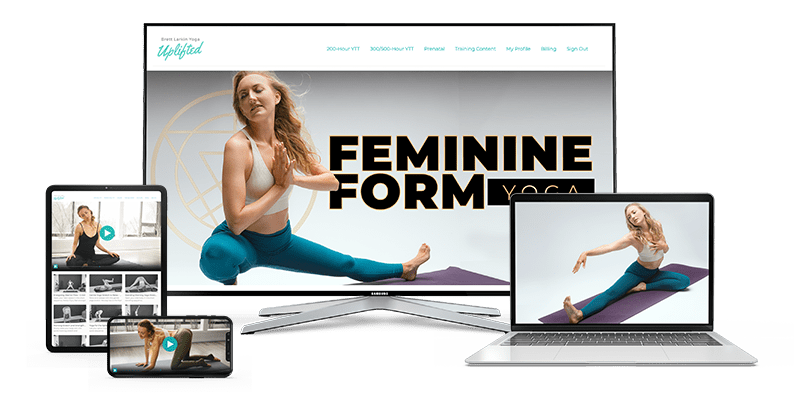
FREE Feminine Form Embodied Yoga Masterclass (usually $67) Unleashing Pleasure + Intuitive Movement on the Mat

Through embodied movement, breathwork, and meditation, yoga strengthens your connection to yourself and the world around you. When you take time to foster your inner awareness, you’re better able to tune into your intuition and emotions while enhancing your sense of belonging.
It’s about more than just physical exercise; it’s a path to deeper self-understanding and genuine connection. It’s a way of life that invites us to be present, listen to our bodies, and cultivate empathy toward ourselves and others. This practice promotes clarity and balance, allowing us to connect with our highest self.
So, where should you start? Here are a few of the best yoga poses for connection…
Top Yoga Poses For Connection
1. Child’s pose – Balasana
Step 1: Beginning on hands and knees, place your left leg and right leg evenly apart, keep your knees together, or bring big toes toward each other and knees apart. Sit back, bringing hips toward heels. On an exhale, lay your torso forward, on or between your thighs, head and arms resting onto your mat, face and palms down.
Step 2: Extend your arms forward on the mat, palms facing down, and gently lower your forehead to the ground. Relax your shoulders and let your chest sink toward the mat.
Step 3: Close your eyes and take deep, steady breaths, focusing on the gentle stretch along your spine, hips, and shoulders. Breathe into your low back, softening, expanding and creating space. Breath is steady, head is heavy, and eyes closed. Rest here for as many breaths as needed.
Variation
If you need extra support, place a pillow or block under your forehead or between your thighs for added comfort. You can also use a blanket under your seat. Additionally, you can keep your arms by your sides, with palms up, if stretching forward is too much.
Benefits
Child’s Pose promotes relaxation by calming the mind, relieving tension in the back, shoulders, and hips, and encouraging deep, restorative breathing. It’s a gentle way to ground yourself and connect with your breath. This is a cooling pose that draws your awareness inward, bringing your breath into the back body and opening the heart.
Pro Tips for Yoga Teachers
- Walk the hands on top of the mat from side to side: Walk hands to the right, pause for 3-5 breaths, switching sides, walk hands to the left, pause 3-5 breaths, come back to center.
- Tell students to take Child’s Pose anytime they need rest during class to reset their breath and energy.
- Guide students to deepen their experience by focusing on long, intentional exhales to release tension and quiet the mind.
2. Cat/Cow – Marjaryasana-Bitilasana
Step 1: Start on your hands and knees with a neutral spine. Make sure your wrists are directly under your shoulders and your knees are under your hips, hip width apart. You don’t need to be in totally proper alignment, but it’s good to start there, then see where your body wants to go.
Step 2: Inhale as you drop your belly toward the mat, arching your back and lifting your head and tailbone toward the sky (Cow Pose). Open your chest and gaze forward.
Step 3: Exhale as you round your back, tucking your chin toward your chest and drawing your belly button toward your spine (Cat Pose). Press into your hands to create space between the shoulder blades.
Step 4: Flow between these two positions with each inhale and exhale, warming up your spine and releasing tension. Let your body move intuitively. Maybe you’ll rotate your torso in circular motions, then switch sides after a few breaths to loosen up your back and hips. Let your body lead the way.
Variation
If you need extra support, place a blanket under your knees for cushioning. You can also perform this movement seated in a chair if getting onto the mat is challenging or you don’t have enough time.
Benefits
Cat-Cow Pose helps release tension in the spine, improves flexibility in the back and neck, and warms up the body for more dynamic poses. It connects breath with movement, and is a heating pose, warming up your interior. This is a great one to do if you want to quickly release stress through your breaht and movement paired together.
Pro Tips for Yoga Teachers
- Cue to move slowly and intuitively, matching each movement with their breath for a deeper connection.
- Suggest adding gentle rotations of the hips and shoulders between Cat and Cow for more fluidity and to release tension in the lower back. Maybe they reach forward or pull back into Child’s pose. Encourage students to explore what feels best.
- Drop reminders to keep their focus on the breath, allowing it to guide the flow of the movement and create space along the spine.
3. Low Lunge – Anjaneyasana
Step 1: Begin standing on the top of your mat. On an exhale, fold forward, bringing your hands to the mat. On inhale, step your left leg back into a lunge. Exhale as you lower your left knee and shin onto the mat, left foot resting on the floor.
Step 2: Position your right toes pointing toward the top of the mat, with your right knee stacked over the ankle. Keep knees bent, with your left knee slightly bent and back of the left leg facing upward. Again, the top of your left foot should rest on the mat or, for more stability, curl the back toes under.
Step 3: Let your self move intuitively in this lunge with your knee bent and right left forward. Maybe you take your right arm up to the sky and your left arm follows. Let your inner thighs hug each other.
Step 4: Maintain steady, controlled breaths. Engage your legs, core, and arms while softening the tops of your shoulders away from your ears. Lift your chin and switch to the other side when you feel ready, letting our right leg go back and your left knee come forward.
Variations
Place blocks under your hands to support your balance. Use a blanket under the back knee for extra padding. Bring your hands onto your front thigh if you have a shoulder injury. You can also curl your back toes under and lift the back knee for a more dynamic stretch.
Benefits
This pose stretches the psoas, hip flexors, and quadriceps, promoting balance and steadfastness. It opens the chest and heart, may help relieve sciatica, and has an overall energizing effect on the body.
Pro Tips for Yoga Teachers
- Encourage students to keep their front knee directly over the ankle to ensure stability and proper alignment.
- Offer the option of using blocks or a blanket for those who need extra support, helping students feel more comfortable in the pose.
- Remind students to engage their core and hug their thighs toward the midline, which helps to protect the lower back and deepen the stretch.
4. Supine Twist
Step 1: Lie on your back with your knees bent and feet flat on the mat. Extend your arms out to the sides in a T-shape, palms facing up. Or bend arms at the elbows.
Step 2: On an exhale, bring your right knee over your left leg, letting your right leg forward twist as your knee falls to the side, keeping your shoulders grounded on the mat. Turn your head to the right, in the opposite direction, allowing your ear to rest on the floor. For a deeper stretch, let your right arm stretch out too and keep your left hand on your right knee.
Step 3: Hold this position for several breaths, feeling the stretch along your spine and across your chest.
Step 4: Inhale as you bring your knees back to center. Keep your legs straight before bending to switch to the other side. Exhale and repeat the twist on the other side, now with our left leg crossed over your right leg, allowing your head to turn to the left, in the opposite direction of your bended knee.
Variation: Place a block or pillow under your knees for added support, especially if your knees don’t reach the ground comfortably. Anytime you practice yoga, it shouldn’t hurt and you should feel supported.
Benefits: Supine Twist helps release tension, especially in the spine, stretches the chest and shoulders, and aids in digestion by massaging the abdominal organs. It’s a heating pose that you’ll find in many yoga classes.
Pro Tips for Yoga Teachers:
- If you’re teaching this twist in your yoga class, encourage students to breathe deeply into the twist to deepen the stretch and relax the muscles.
- Offer the option of using a blanket for students who need extra support or have tight lower backs.
- Remind students to focus on grounding their shoulders to avoid over-twisting and to protect the spine.
Take my feminine energy quiz to get a recommended practice for balancing YOUR feminine energy 👇
Additional Tips
- Your breath is the key to deepening your mind-body-spirit connection. If you can’t do one of these poses, then simply practice breathwork, wherever you are. It’s about the feeling of connection, more than anything, and that comes from the breath.
- With all of these poses, you can visualize a light in your third eye center. This will increase your ability to connect with your inner wisdom.
- Use your favorite affirmations or set an intention to deepen your sense of purpose.
- Incorporate gentle touch or self-hugging motions during poses to nurture feelings of self-compassion and connection.
Final Thoughts
By learning how to connect inward through yoga, you’re fostering a stronger bond with your intuition, emotions, and community. It’s in this space of connection that true healing takes place, allowing you to live in alignment with your highest self.
If you want to go even deeper, I invite you to join my Somatic Yoga Training Certification. This comprehensive training will equip you with practical tools and insights to enhance your practice and effectively guide others on their somatic yoga journey.
Next Steps
- Take a deep dive into embodiment and somatic yoga with my Somatic Yoga certification program.
- If you’re interested in practical kriya yoga as a way to improve your daily life and relationships, check out my Yoga for Self Mastery course.
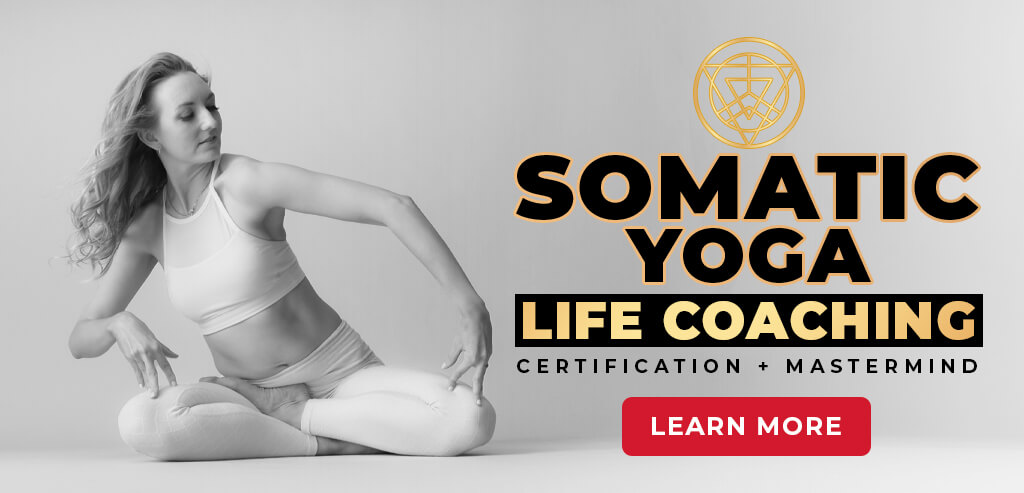
FREE Embodied Yoga Workshop (usually $67) Somatic Techniques & Cord Cutting Ritual
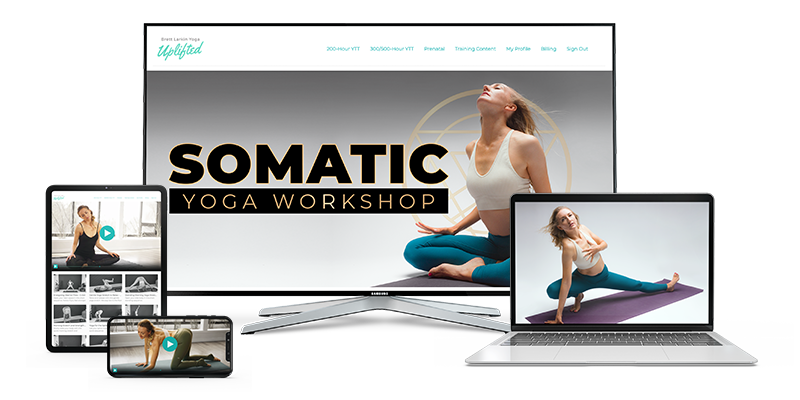
Find more yoga sequences by benefit.
YOU MIGHT ALSO LIKE
- Authentic Pathways: Connecting With Higher Self for Inner Peace
- Yoga to Reconnect with Yourself: 5 Essential Practices for Inner Peace
- Yoga for Connection: 10 Poses to Deepen Relationships and Bonding
- Yoga To Connect With Your Body For Mind-Body Harmony
- Yoga to Connect with Feminine Energy: 5 Transformative Practices
- Yoga to Connect with Your Heart: 3 Poses for Emotional Balance
- Myofascial Release Yoga: Unlock Tension and Improve Flexibility
- 6 Hip Openers For Emotional Release
- Office Yoga: 10 Poses You Can Do Right Now
- Ayurveda Food Combining: The Key to Balanced Digestion
- Yoga For Grief: 8 Yoga Poses For Support
- Yoga for Vata Dosha: Practice Poses and Tips
- Yoga for Pitta Dosha: Practice Poses and Tips
- Yoga for Kapha Dosha: Practice Poses and Tips
- Can We Do Yoga During Periods? Here’s The Yoga Philosophy

